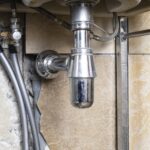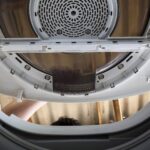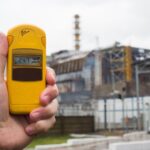Your whole house fan suddenly stopped working, and you’re left wondering where to start troubleshooting? The efficiency of your home’s ventilation directly impacts comfort and energy savings, making it essential to understand and rectify fan malfunctions swiftly. This guide delves into the heart of the problem, offering detailed insights into testing and repairing the fan’s motor and switch components, so you can restore optimal airflow in your living space.
- Diagnosing the Problem: Learn how to identify signs of electrical issues or mechanical blockages affecting your whole house fan.
- Inspecting the Motor: Discover a step-by-step approach to visually inspect and test the motor with a multimeter for potential faults.
- Evaluating the Switch: Understand the significance of switch functionality and how to verify wiring integrity with ease.
- Common Fixes and Solutions: Equip yourself with practical solutions for replacing faulty parts and conducting minor repairs.
- Preventative Maintenance Tips: Implement best practices that will help maintain your fan’s efficiency and extend its lifespan.
By diving into this article, you’ll gain essential knowledge and actionable steps to resolve those buzzing or silent fan issues. Keep reading to ensure your home enjoys consistent, refreshing airflow, while also contributing your own insights to this ever-evolving subject!
Diagnosing the Problem: Is Your Whole House Fan Not Working?
Understanding why your whole house fan is not working is crucial to restoring its functionality.
One common issue is electrical failure, which may result from blown fuses, tripped circuit breakers, or faulty wiring connections. In addition, mechanical obstructions like debris buildup or misaligned blades can impede the fan’s movement.
Other potential causes include incorrect thermostat settings or a malfunctioning control system that can disrupt the fan’s operation.
By identifying these core issues, you can effectively troubleshoot and set the stage for further testing and necessary repairs to restore your fan’s functionality.
Inspecting and Testing the Motor
The motor is at the heart of your whole house fan system, making motor inspection and testing essential for diagnosing issues.
Start with a thorough visual inspection. Look for signs of wear, such as frayed wiring, burnt components, or loose connections. Ensure that the fan blades are unobstructed and rotate freely.
Next, use a multimeter to perform electrical tests. Set the multimeter to the correct setting, and test the voltage at the motor terminals to confirm that it is receiving power. A lack of power could indicate wiring issues.
If the motor receives power but does not function, it may be a sign of motor burnout or internal damage, necessitating further examination or replacement.
By following these steps, you can identify potential motor problems and take the necessary actions for repair or replacement.
Evaluating the Switch: Whole House Fan Not Working? Motor and Switch Testing Guide
A malfunctioning switch can often be the invisible force behind your whole house fan not working. Switch failures are notoriously common, so it’s important to understand the different types utilized in whole house fans.
These switches can range from simple toggle switches to sophisticated multi-speed controllers. To ensure your fan operates smoothly, comprehensively testing switch functionality is essential.
Begin by turning off the power to eliminate any risk of electrical shock. Remove the switch cover to inspect the internal wiring. Look for any obvious signs of damage or loose connections.
Using a multimeter is the next step to test the switch’s electrical integrity. Set the multimeter to continuity mode. Check if the current flows properly when the switch is toggled.
If the multimeter indicates a lack of continuity, the switch might be defective and in need of replacement. When inspecting wiring, make sure all connections are secure and free from corrosion.
Keeping a functioning switch is crucial for the optimal operation of your whole house fan. A properly working switch can dramatically improve fan efficiency and swiftly address any fan-related issues.
Common Fixes and Solutions for Fan Restoration
After pinpointing the issues, addressing them effectively is the next logical step. Many common fixes and solutions can restore your whole house fan to full working condition, ensuring efficiency and reliability.
One frequent fix is replacing a faulty motor. Given its central role, having a robust motor ensures the fan circulates air properly, maintaining its cooling function. Proper installation and alignment are critical when replacing the motor.
Switch replacement is another common remedy. As mentioned, if testing reveals faulty switch operations, swapping it for a new one can often resolve the problem entirely.
Implementing minor repairs, such as tightening loose components or addressing electrical issues, leads to improved operational performance.
Remember, using quality replacement parts and following manufacturer guidelines ensures each fix not only restores function but also enhances the longevity of the fan. Taking these corrective measures guarantees a proactive approach to maintaining an effective ventilation system.
Preventative Maintenance Tips to Avoid Future Issues
Regular upkeep of your whole house fan is crucial for ensuring its long-term performance and efficiency. By adopting a proactive approach to maintenance, you can greatly reduce the risk of future malfunctions and significantly enhance the lifespan of your fan.
Start by regularly cleaning the fan blades and housing. Dust and debris accumulation can lead to reduced airflow and increased strain on the motor. Simply using a damp cloth to wipe the blades and surrounding areas is a quick and effective maintenance step that will help keep your whole house fan running smoothly.
Check the fan’s motor and switches periodically. Even if they’re functioning well, a quick inspection can help spot any signs of wear or potential issues. While performing a visual check, listen for any unusual noises that could indicate mechanical stress or potential electrical failures.
Lubricating the fan’s moving parts will also help maintain its operational efficiency. Applying a few drops of lubricant to the motor bearings can prevent friction that might otherwise lead to overheating or wear.
For electrical components, ensure all wiring and connections remain secure. Loose connections can lead to electrical failures or safety hazards. It’s recommended to tighten any loose wires or fixtures at least once a year.
Seasonal checks are another great way to ensure fan longevity. In the fall and spring, give your whole house fan a thorough inspection. This seasonal attention aligns with typical usage patterns and helps prepare your fan for optimization during warmer months.
Finally, keeping an eye on the overall structural integrity of your fan and its components, such as mounts and brackets, will help in early detection of any structural issues that might develop over time.
Incorporating these maintenance tips into your routine will position you to enjoy reliable and efficient operation from your whole house fan for years to come. So why not share your own maintenance experiences or insights? Your comments could be invaluable to the community!
Whole House Fan Troubleshooting FAQ
Why is my whole house fan suddenly not operating?
- Check for blown fuses or tripped circuit breakers.
- Inspect the motor for signs of failure or burnout.
- Ensure the switch is functioning properly.
How do I test the motor of my whole house fan?
- Visually inspect the motor for any physical damage.
- Use a multimeter to check for continuity.
What types of switches are used in whole house fans?
- Toggle switches, rotary switches, and smart switches are common types.
How can I fix a non-working switch on my fan?
- Replace the switch if it’s faulty.
- Check wiring connections for any loose ends.
What are some common maintenance tips for whole house fans?
- Regularly clean dust and debris from blades and vents.
- Lubricate moving parts if required.
- Perform periodic checks on electrical connections.
Can I restore a stalled fan on my own?
- Yes, by following simple troubleshooting steps outlined in the guide.
- Consult a professional if unsure or if the issue persists.





